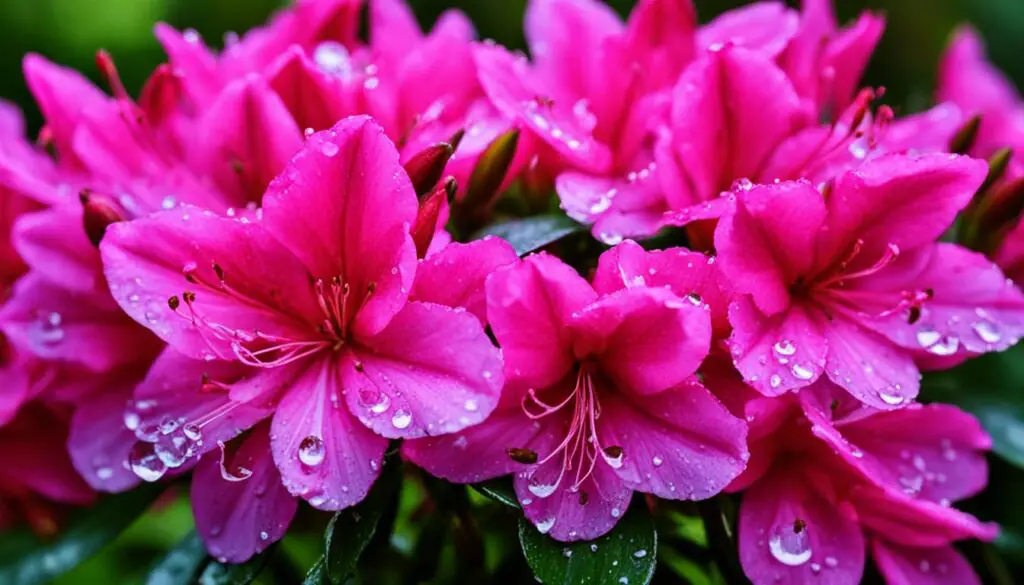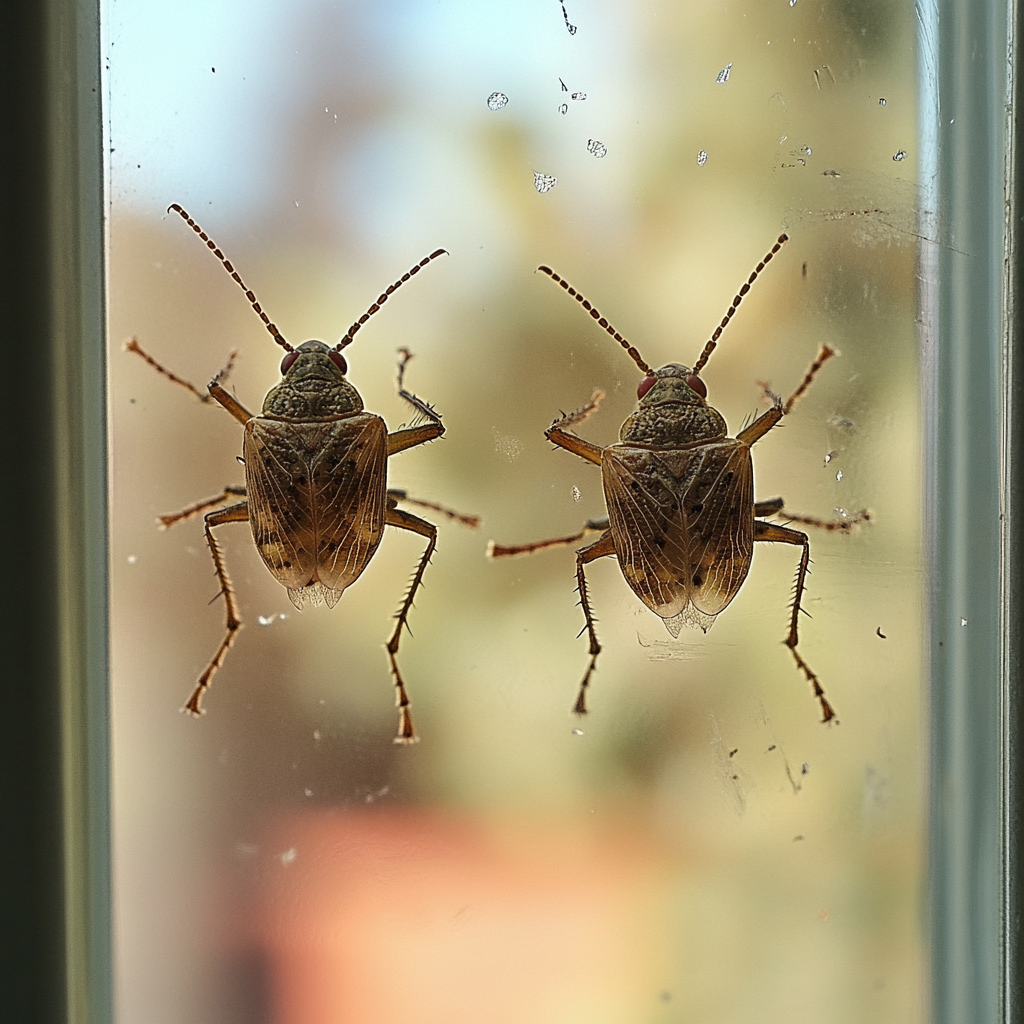Azaleas are a favorite among gardeners in the South, right after hydrangeas. But they’re not just for Southerners; they thrive in zones 5-9 across the country.
With dozens of species native to the U.S., azaleas fit well in many climates. They come in various shapes, sizes, and colors, with some staying green all year and others shedding leaves in winter.
While they bloom for about three weeks, some azaleas, like Double Shot® Azaleas, bloom in spring and summer too.
This guide will cover key topics like the difference between azaleas and rhododendrons, how to use them in your garden, planting, maintenance, pruning, and propagating. We’ll help you grow beautiful, healthy azaleas in your garden.

Key Takeaways
- Azaleas range in hardiness from zones 5-9, making them suitable for various climates.
- Reblooming azalea varieties like Double Shot® provide blooms twice a year.
- Evergreen azaleas are commonly used as foundation plants due to their size, shape, and flowers.
- Azaleas prefer partial shade and acidic soil with a pH of 4.5 to 6.0.
- Planting azaleas in the fall allows for optimal root establishment.
What Are Azaleas and How to Use Them in Garden Design
Azaleas are a favorite in gardens for their bright, fragrant flowers that bloom from early spring to summer.
But, did you know they are a type of rhododendron? Let’s dive into the world of azaleas and see how you can add them to your garden design.
What’s the Difference Between Azaleas and Rhododendrons?
Azaleas belong to the Rhododendron family but stand out with some key traits. They lose their leaves in fall, unlike evergreen rhododendrons.
Azalea flowers are shaped like funnels and smell sweeter than rhododendron blooms. They have 5 stamens, while rhododendrons have more.
How to Use Azaleas in Garden Design
Azaleas are versatile plants perfect for many garden styles. Here are ways to use them in your landscape:
- Border Plantings: Azaleas create beautiful borders along paths and garden edges.
- Foundation Plantings: Short azaleas work well at the base of homes, adding color and texture.
- Specimen Plants: Large azaleas can be the main attraction in your garden, showing off their vibrant colors.
- Ground Covers: Some azaleas spread out and can cover the ground, filling your garden with flowers.
- Containers and Planters: Azaleas do great in pots, adding color to patios, balconies, and entryways.
Choosing to add azaleas to your garden will make it more lively and beautiful.
Grow An Azalea and Care: Planting and Maintenance
Azaleas are popular for their bright and varied flowers. But, they need special care to grow well. Let’s look at the best ways to plant and care for them.
Where and When to Plant Azaleas
Azaleas love light shade or dappled sunlight, especially in the morning. They need soil that’s moist, well-drained, and acidic, with a pH of 4.5 to 6.0.
If your soil is too neutral or alkaline, you can fix it with aluminum sulfate, sulfur, acidic fertilizer, or iron sulfate.
Plant azaleas in late spring or early fall. This lets them get their roots ready in cooler, wetter seasons.
Some azaleas can even handle temperatures down to minus 45 degrees Fahrenheit.
Watering, Mulching, and Fertilizing Azaleas
Azaleas have shallow roots that need steady moisture, about 1 inch of water a week when they’re growing.
Don’t let the soil get too wet, as this can cause root rot. Mulching with 2-3 inches of organic stuff like pine bark or wood chips keeps the soil moist and the right temperature.
Give your azaleas a balanced, acid-loving fertilizer in early spring and again 12-16 weeks later. This helps them grow strong and bloom well.
Use a fertilizer like Pennington Rejuvenate Plant Food Evergreen & Azalea 4-3-3 for up to four months of nutrition.

“Proper soil pH maintenance through balanced acid-loving plant fertilizer application in early spring helps promote healthy growth and blooming.”
Follow these tips for planting, watering, mulching, and fertilizing to grow beautiful azaleas.
Pruning and Propagating Azaleas
Azaleas don’t need much pruning but a little care helps them grow fuller. Prune them right after the flowers fall off in late spring.
This is when the buds for next year’s flowers start to grow. Make sure not to cut off the buds by deadheading spent flowers, as it helps the plant focus on growing green leaves.
There are several ways to propagate azaleas, but growing from seed can lead to different plants.
To keep the same traits as the parent plant, use vegetative propagation. Techniques like air layering, pot layering, and cuttings work well for making copies of your favorite azaleas.
Evergreen azalea cuttings are easy to root, best taken from new growth in June and later. They do well in a mix of peat and perlite and usually don’t need special hormones to root.
Deciduous azaleas are a bit harder but can be successful with the right care, like bottom heat and mist. With patience and the right conditions, you can grow new azaleas that are just like the originals.
FAQ
What are azaleas and how are they different from rhododendrons?
Azaleas are a type of rhododendron, but they’re not all the same. Azaleas lose their leaves in winter, unlike some rhododendrons that keep them year-round. Azaleas have funnel-shaped flowers that smell nice, while rhododendrons have bell-shaped ones. Azaleas have 5 stamens, and rhododendrons have more.
Where can azaleas be grown and what are the ideal growing conditions?
Azaleas grow well in zones 5 to 9. They like partial shade or dappled sunlight, especially in the morning. They need moist, acidic soil with a pH between 4.5 and 6.0. If your soil is too neutral, you can make it more acidic.
How do I prune and propagate azaleas?
Pruning azaleas is light, done after they bloom in late spring. This helps them grow fuller. Be careful when removing dead flowers to avoid hurting new buds. You can also propagate azaleas by cuttings or layering.
How can I use azaleas in my garden design?
Azaleas come in many shapes, sizes, and colors, making them versatile for gardens. Use them as foundation plants, borders, or in big groups. They’re also great in containers for a beautiful spring look.
What is the typical blooming season for azaleas, and are there any reblooming varieties?
Azaleas bloom for about three weeks. But, some types like Double Shot® Azaleas bloom in spring and summer too.



